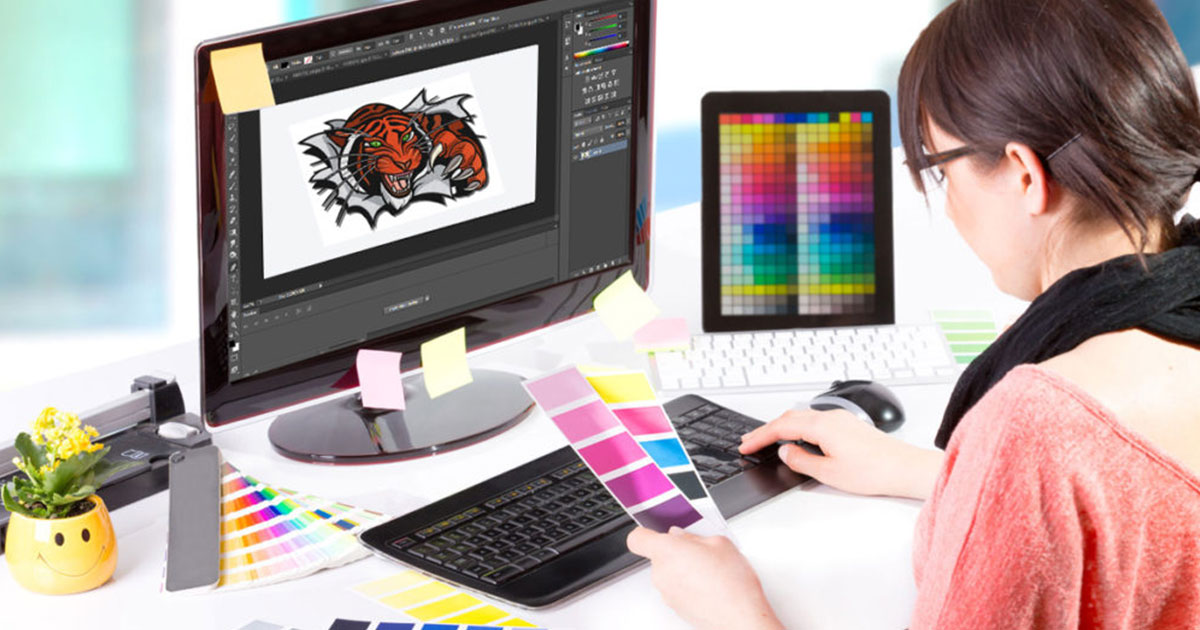Budget Friendly Digitizing for Embroidery: Precision and Information
Budget Friendly Digitizing for Embroidery: Precision and Information
Blog Article
Mastering the Needlework Digitizing Process: Your Ultimate Guide
Needlework digitizing is a meticulous craft that calls for precision and experience to convert detailed designs right into digital layouts for equipment needlework. As craftsmens embark on this journey to grasp the needlework digitizing procedure, a detailed understanding of the essentials sets the foundation for quality.

Understanding Needlework Digitizing Essentials
Embroidery digitizing fundamentals develop the foundation upon which detailed styles are converted into machine-readable styles for exact stitching. This first action in the needlework digitizing procedure is vital for ensuring that the final embroidered item is a faithful depiction of the initial layout. Understanding embroidery digitizing fundamentals involves grasping key principles such as stitch kinds, sew instructions, density, padding, and pull compensation.
Sew types play an important duty in figuring out the aesthetic and textural end result of the embroidered design. By picking the suitable stitch kind, whether it be satin, fill, or running stitch, digitizers can attain the wanted impact and enhance the total high quality of the embroidery. In addition, stitch instructions affects the circulation and dimension of the style, while density identifies the spacing and protection of the stitches.
Furthermore, rug stitching provides stability to the style by protecting the fabric and stopping distortion during the needlework procedure. Pull payment is an additional important consideration to neutralize the natural propensity of fabric to contract when stitched. Mastering these embroidery digitizing essentials is fundamental for developing professional-quality stitched products.
Selecting the Right Digitizing Software
Choosing the suitable digitizing software program is a crucial decision that substantially impacts the effectiveness and quality of the embroidery digitizing process. Digitizing for Embroidery. When choosing the ideal digitizing software program, it is vital to consider elements such as the intricacy of layouts you intend to create, the user-friendliness of the software, the degree of consumer assistance used, and the compatibility with your needlework machine
There are various digitizing software application choices available in the market, varying from basic programs for novices to advanced software application for professional digitizers. Some popular options consist of Wilcom EmbroideryStudio, Hatch Needlework Software Application, and PulseID. These software packages offer a Extra resources wide variety of devices and functions to aid you create detailed designs effortlessly.
Before deciding, it is a good idea to explore the different software alternatives through cost-free tests or demonstrations to establish which one best matches your needs. Furthermore, reviewing evaluations and looking for recommendations from knowledgeable digitizers can offer important understandings right into the strengths and weaknesses of each software package (Digitizing for Embroidery). By thoroughly reviewing your requirements and contrasting the functions of various digitizing software program, you can make an enlightened choice that boosts your embroidery digitizing workflow
Digitizing Tools and Methods

Optimizing Layout Setup for Needlework
Mastering the details of design settings is basic in attaining optimal outcomes in the needlework digitizing process, structure upon the structure laid by understanding digitizing tools and techniques. When enhancing style settings for embroidery, my company it is crucial to take into consideration variables such as stitch type, thickness, padding, draw settlement, and enrollment. Enrollment setups line up various elements of the design properly, keeping total layout honesty.

Troubleshooting Common Digitizing Issues
When coming across common digitizing issues throughout the embroidery procedure, it is important to understand the origin and execute effective services quickly. One common problem is stitch density problems, where stitches might be also thick, creating the fabric to tighten, or also sparse, resulting in gaps in the style. Changing the stitch thickness setups in the digitizing software program can help resolve this concern.
Another regular obstacle is thread breaks throughout the needlework procedure. This can happen as a result of different reasons such as incorrect stress settings, plain needles, or utilizing low-quality string. Guaranteeing appropriate maintenance of the needlework maker, consisting of routine needle adjustments and stress modifications, can minimize the incident of string breaks.
Moreover, layout registration errors can cause misaligned components within article source the embroidery layout. Examining the style positioning in the digitizing software and making necessary modifications prior to stitching can aid in preventing this issue. By dealing with these common digitizing concerns quickly and properly, you can make certain a smoother needlework process and premium completed items.
Final Thought
In verdict, mastering the embroidery digitizing process needs a solid understanding of the fundamentals, the right choice of software application, and expertise of tools and techniques. Maximizing style setups and troubleshooting typical digitizing concerns are vital action in guaranteeing top quality needlework outcomes. By complying with these steps diligently, one can attain accuracy and performance in the digitizing process.
Report this page